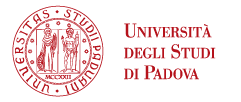SIMRA
Acronimo: SIMRA
Titolo: Social Innovation in Marginalised Rural Areas
Bando: Horizon 2020 - Innovation Actions
Durata: Inizio: 01/04/2016 - Fine: 31/03/2020 (48 mesi)
Coordinatore: P1 - (HUT) The James Hutton Institute (UK)
Budget totale EU: € 5.935.828,75
Budget TESAF: € 400.547,50
Responsabile scientifico: Laura Secco
Team: Elena Pisani; Davide Pettenella; Paola Gatto; Catie Burlando (assegnista 01/06/2016 - 07/04/2017); Riccardo Da Re (assegnista 1/11/2016 - 31/10/2019)
Riassunto: SIMRA’s overarching objective is to fill the aforesaid knowledge gap by advancing the state-of-the-art in SI in agriculture and forestry sectors and in RD in general, encompassing its complexities and various dimensions, and in understanding how to support it, addressing specificities and priorities of social needs and new social relationships and collaborations, especially in MRAs across the EU, Associated States and other countries, with a particular focus on the Mediterranean region.
In this territorial context, the specific objectives of SIMRA include developing:
1) A systematic theoretical framework and a systematic operational framework for categorising, understanding, and operationalizing SI in different settings and across scales.
These frameworks will be designed in an integrated manner for:
- Identifying the actual and potential role of SI in unfolding the territorial capital.
- Offering a structured method to arrange a multi-level, multi-actor and trans-disciplinary engagement of stakeholders in analysing and operationalizing SI.
- Explaining why regions with similar initial conditions for SI display diverging paths.
- Understanding of barriers, success factors and lessons learned in SI, in different contexts and scales.
The frameworks will rely on and combine, in novel systematic ways, existing data and procedures with beyond-the-state-of-art science to arrive at operational methods for end-users to address SI policy and practical questions. Moreover, the framework will be fully integrated/complemented with the existing European frameworks, e.g. the Common Monitoring and Evaluation Framework of ENRD (Slee, 2014).
2) A categorisation/classification (i.e. ‘catalogue of diversity’) of the SIs observable in rural areas completed, considering the specificities in terms of social needs priorities and social relationships/collaboration types. This categorisation will structure SI case study selection (objective 4) and shape further research.
3) An integrated set of methods for the evaluation of SI and its impacts on different components of territorial capital in rural areas across the target region. On the one hand, criteria, methods and operational tools (e.g. indicators, semi-structured interviews, etc.) for assessing SIs in MRAs will be innovative (e.g. most appropriate mix of methods/tools chosen depending on the evaluation design); on the other hand, they will be fully integrated with the existing European frameworks (e.g. the CMEF of ENRD - ob.1). This set of methods will be used for collecting empirical evidence in selected case studies (objective 4).
4) A co-constructed evaluation (by researchers and practice community) of SIs across selected case studies carried out, covering spatial variation and heterogeneity of regions (e.g. in terms of natural conditions, socio-economic development, social capital, governance and institutional settings, etc., including data availability on SIs). The evaluation, based on the set of methods developed as objective 3, will include consideration of the economic, sociological, environmental, governance and institutional components of territorial capital.
5) New and improved knowledge coming from the first level of analysis (including from SI case studies) synthesised and disseminated to policy makers/end-users to inform the creation of more effective SI options in challenged regions, explicating the role of SI in developing more sustainable agri-food and forestry systems, shaping RD trajectories, and proposing ways to improve territorial governance and pave the way for a more integrated approach to RD. In particular, new datasets on SI will be created and made accessible, where possible, through established hubs; good practice guidelines (e.g. for collaborative learning) will be generated and distributed; reports and scientific papers will be published, and publicity materials will be disseminated.
6) Collaborative learning opportunities created and innovative networking actions launched by integrating, consulting and engaging stakeholders (including policy makers and SME practice communities involved in agriculture, agro-food and forestry sectors and in RD in general) at different and multiple scales, from regional to national and local (e.g. case studies) throughout the whole project, with continuous interactions among researchers, ‘knowledge brokers’ and stakeholders and leaving a durable legacy.
Sito Web: http://www.simra-h2020.eu/






